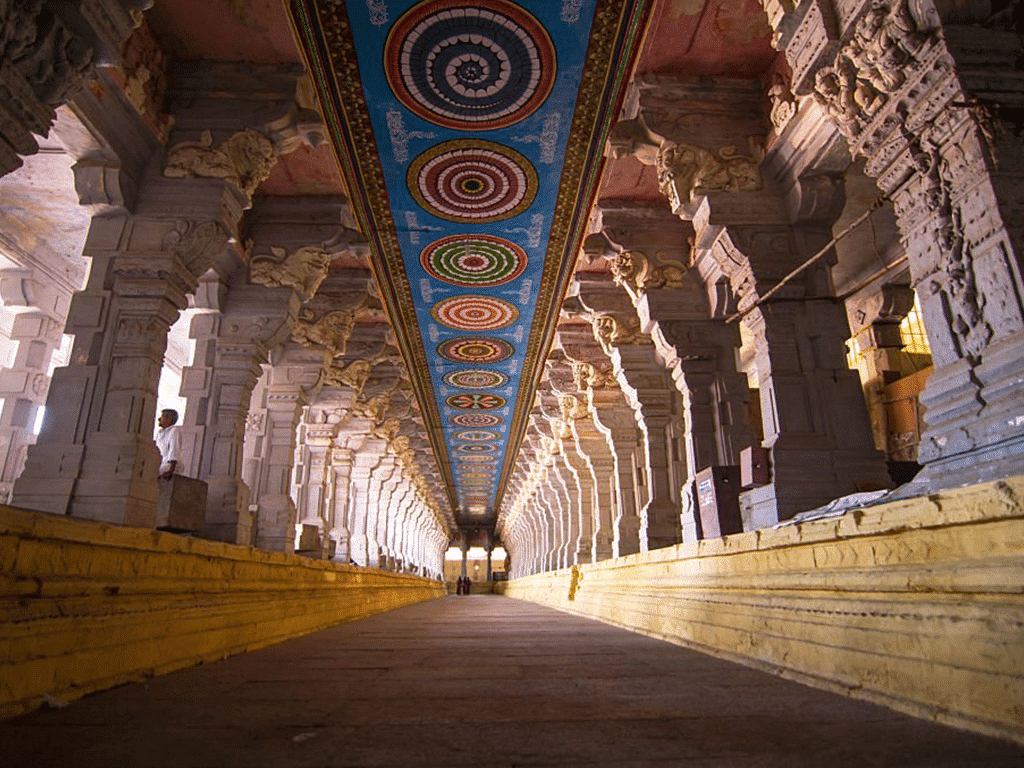Priyal Dholakia (Assistant Editor)
One of the oldest Indian epics, the Ramayan, has long been the focus of study and controversy. Some regard it as a work of folklore and tradition, while others believe it is historical. Several historical places have been linked to Ramayan events, suggesting a relationship. There is evidence at many historical sites that the Ramayan is more than just a story. This article will go into more depth about it.
1. Rameswaram
Famous for its connection to the building of the Ram Setu, Rameswaram is an island in the Gulf of Mannar. The Ramayan says Ram’s vanaras (monkeys) built this bridge to reach Lanka and save Sita from Ravan. Geological studies show that this bridge’s creation was not a natural event. This demonstrates that it was human-built, as the epic claims.

2. Hampi
Hampi, in Karnataka, is thought to be the site of Kishkindha, Sugriv’s Ramayan kingdom. Ancient city ruins show that there was a thriving society during the time period of the epic. Hampi is historically significant due to the Vitthal Temple complex and other structures.

3. Chitrakoot
These mountains, called Vindhya, include Chitrakoot. It is linked to Ram’s exile, along with Sita and Lakshman. Where the three spent a large part of their banishment is depicted in the Ramayan as a peaceful wooded area. People who believe the epic is real visit Chitrakoot for its natural beauty and Ram temples.
4. Janakpur
The conventional wisdom holds that Sita was born in Janakpur, which is in modern-day Nepal. The city is home to the Sita Temple and other attractions related to her life and her father, King Janak. Janakpur’s veneration for Sita and Ramayana ties support the epic’s historical validity.
5. Ayodhya
Ayodhya is thought to be where Ram was born and where many important events in the Ramayana took place. A lot of old books talk about the city, and its past fits with what the epic says about it. Ancient temples and architecture like Ram Janmabhoomi strengthen the Ramayan-Ayodhya connection.
6. Nasik Caves
The Nasik Caves are located in Maharashtra. Nasik is considered to be the location where Ravan kidnapped Sita. Inscriptions and carvings from the Ramayan can be found at the Pandavleni Caves in Nasik. These caves serve as a historical reference to the epic.
7. Panchavati
The exiled Ram, Sita, and Lakshman are supposed to have dwelt in Panchavati, which is close to Nasik. The name “Panchavati” is derived from the five banyan trees under which they resided. The presence of ancient temples and natural beauty in this region connects it to the Ramayan.
8. Ravanaphadi Cave
Aihole is known for its ancient rock-cut temples, and among them is the Ravanaphadi Cave. Inscriptions and carvings in the cave represent Ramayan episodes, notably Ravan abducting Sita. These carvings provide historical evidence of the epic’s influence on the region.
9. Trimbak Jyotirlinga
Trimbak, near Nashik, is home to one of Bhagavan Shiv’s twelve Jyotirlingas. The Ramayan says that Ram prayed to Shiv right here to get His blessings while on his way to save Sita from Ravan. The temple’s existence and connection to the Ramayan reinforce its historical importance.
The Ramayan is a widely debated subject. But these historical places and their agreement with the epic serve as evidence which suggest that The Ramayana is history rather than mythology. These locations, especially Ram Setu, stimulate and pique our historic curiosity. And make the Ramayana and history fascinating topics for scholars and aficionados. These places continue to inspire awe and devotion to Ram’s eternal story, regardless of whether one believes in the divine or historical aspect.
If you love Indian history and mythology, do you feel Indian should make a mythological or historical action game exploring India’s ancient roots?
If you are into gaming, also check out some of our articles such as impact of virtual reality in gaming, and the top VR horror games to play.
